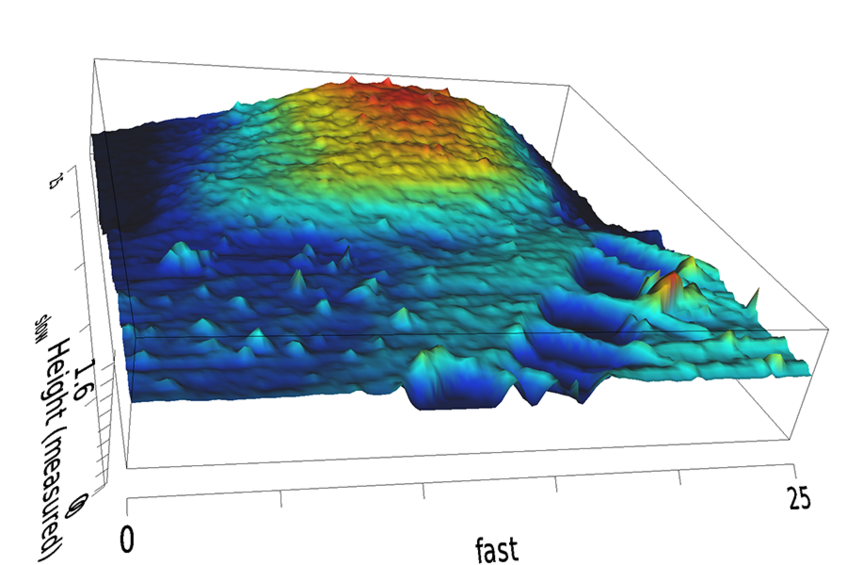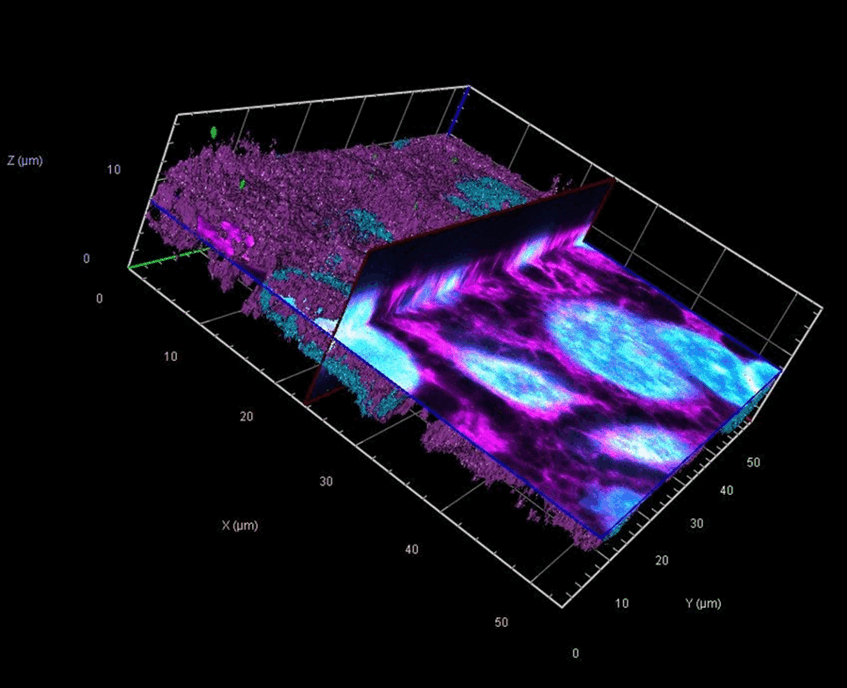Research
Mechanochemical Sensation in Bladder cells

Mechanochemical Sensation in Bladder cells
Perfectly combining toxicology and biophysics bladder cells are constantly exposed to a fascinating chemical and physical environment. Several experimental questions of our working group aim at understanding how these cells are able to cope with the chemical complexity of the urine, as well as with the physical plasticity necessary for the bladder functionality.
Key Papers
Jobst M., Hossain M., Kiss E., Bergen J., Marko D., Del Favero G., Autophagy modulation changes mechano-chemical sensitivity of T24 bladder cancer cells, Biomedicine & Pharmacotherapy, Volume 170, January 2024, DOI: 10.1016/j.biopha.2023.115942
Gruber L., Jobst M., Kiss E., Karasová M., Englinger B., Berger W., Del Favero G., Intracellular remodeling associated with endoplasmic reticulum stress modifies biomechanical compliance of bladder cells, Cell Communication and Signaling, Oct. 30, 2023, DOI: 10.1186/s12964-023-01295-x
Jobst M., Kiss E., Gerner Ch., Marko D., Del Favero G., Activation of autophagy triggers mitochondrial loss and changes acetylation profile relevant for mechanotransduction in bladder cancer cells, Archives of Toxicology, October 10, 2022, DOI: 10.1007/s00204-022-03375-2
Del Favero G., Zeugswetter M., Kiss E., Marko D., Endoplasmic Reticulum Adaptation and Autophagic Competence Shape Response to Fluid Shear Stress in T24 Bladder Cancer Cells, frontiers in Pharmacology, 03 May 2021, DOI: 10.3389/fphar.2021.647350
Food Constituents and Contaminants in the regulation of mechanotransduction of intestinal cells

Food Constituents and Contaminants in the regulation of mechanotransduction of intestinal cells
As complementary faces of the same medal, intestinal cells essentially rely on both biochemical and biophysical competence. On the one hand, daily ingestion of food constituents and contaminants mirrors lifestyle and environmental-related exposures, on the other, barrier function has to be maintained as well es peristaltic movements and adaption to the abdominal cavity. How short-term and long-term exposure to dietary molecules contribute to tip the mechanical balance in the gut stimulates our curiosity since years.
Key Papers
Iriarte-Mesa C., Jobst M. Bergen J., Kiss E., Ryoo R., Kim J.-C., Crudo F., Marko D., Kleitz F., Del Favero G., Morphology-Dependent Interaction of Silica Nanoparticles with Intestinal Cells: Connecting Shape to Barrier Function, Nano Letters, July 11, 2023, DOI: 10.1021/acs.nanolett.3c00835
Bergen J., Karasova M., Bileck A., Pignitter M., Marko D., Gerner Ch., Del Favero G., Exposure to dietary fatty acids oleic and palmitic acid alters structure and mechanotransduction of intestinal cells in vitro, Archives of Toxicology, April 29, 2023, DOI:10.1007/s00204-023-03495-3
Rebhahn V.I.Ch., Kiss E., Marko D., Del Favero G., Foodborne compounds that alter plasma membrane architecture can modify the response of intestinal cells to shear stress in vitro, Toxicology and Applied Pharmacology, Volume 446, 1 July 2022, DOI: 10.1016/j.taap.2022.116034
Del Favero, G.; Zaharescu, R.; Marko, D., Functional impairment triggered by altertoxin II (ATXII) in intestinal cells in vitro: cross-talk between cytotoxicity and mechanotransduction. Archives of toxicology, Dec. 2018, doi:10.1007/s00204-018-2317-6 (2018)
Cell specific responses to mechanical cues and mechanisms of toxicity targeting the mechanosensory apparatus
The “biophysical fingerprint” that characterizes healthy cells can change upon exposure to toxicants or during disease. Intriguingly, changes in cell shape often manifest at the beginning of a toxic insult and can be used to detect functional impairment at early stage. We are constantly hunting molecular mechanisms of toxicity that affect cell morphology, motility and the integrity of cell mechanosensory apparatus.
Key Papers
Del Favero G., Bergen J., Palm L., Fellinger Ch., Matlaeva M., Szabadi A., Fernandes A.S., Saraiva N., Schröder Ch., Marko D., Short-Term Exposure to Foodborne Xenoestrogens Affects Breast Cancer Cell Morphology and Motility Relevant for Metastatic Behavior In Vitro, Chemical Research in Toxicology, September 11, 2024, DOI: 10.1021/acs.chemrestox.4c00061
Bileck A., Bortel P., Kriz M., Janker L., Kiss E., Gerner Ch., Del Favero G., Inward Outward Signaling in Ovarian Cancer: Morpho-Phospho-Proteomic Profiling Upon Application of Hypoxia and Shear Stress Characterizes the Adaptive Plasticity of OVCAR-3 and SKOV-3 Cells, frontiers in Oncology, 14 February 2022 | DOI: 10.3389/fonc.2021.746411
Del Favero G., Janker L., Neuditschko B., Hohenbichler J., Kiss E., Woelflingseder L., Gerner Ch., Marko D., Exploring the dermotoxicity of the mycotoxin deoxynivalenol: combined morphologic and proteomic profiling of human epidermal cells reveals alteration of lipid biosynthesis machinery and membrane structural integrity relevant for skin barrier function, Archives of Toxicology, 2021 Apr. 1, doi: 10.1007/s00204-021-03042-y
Del Favero G., Bonifacio A., Rowland T. J., Gao Sh., Song K., Sergo V., Adler E. D., Mestroni L., Sbaizero O., Taylor M. R. G., Danon Disease-Associated LAMP-2 Deficiency Drives Metabolic Signature Indicative of Mitochondrial Aging and Fibrosis in Cardiac Tissue and hiPSC-Derived Cardiomyocytes, Journal of Clinical Medicine, 2020 Jul 31;9(8):E2457. doi: 10.3390/jcm90824
Del Favero, G.; Woelflingseder, L.; Janker, L.; Neuditschko, B.; Seriani, S.; Gallina, P.; Sbaizero, O.; Gerner, C.; Marko, D., Deoxynivalenol induces structural alterations in epidermoid carcinoma cells A431 and impairs the response to biomechanical stimulation. Scientific reports, Jul 27, 2018, 8 (1), 11351. doi:10.1038/s41598-018-29728-5
